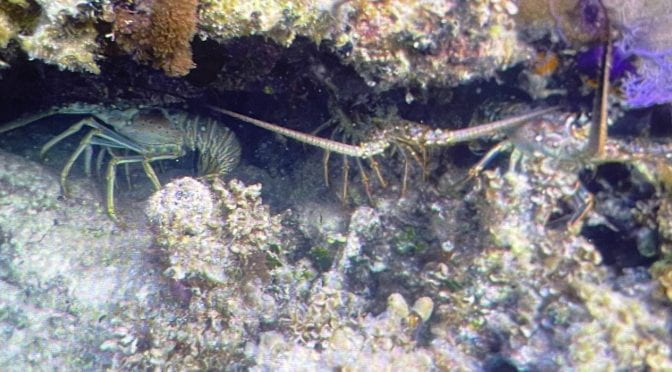Hi all, it’s Faith with Day 4 updates from the 2022 Belize trip!!!
Today we started our attempt to answer our new research questions: “ What is the correlation between percent live coral and the sea urchin population?” and “How does that correlation change between mpa and non mpa reefs?”
Our hypothesis are as follows: we think that areas with moderate amounts of sea urchins will have the highest percentage of live reefs. Additionally, we think that the unprotected reefs will have an abundance of sea urchins and therefore have less live coral. We think this because unprotected reefs are susceptible to overfishing, which reduces the amount of creatures that prey on sea urchins.
Our methods were to lay out 50ft of transect tape in random, radial direction s from one central point. Then, at every 5 meters we would count the squares of live coral and dead coral using a quadrat. Our final part, would be collecting as many sea urchins as possible in 10 minutes, which we would identify later.
This method sounds easy in practice, but let me tell you. Counting. The. Corals. Was. Hellish. Don’t try to tell me, “Corals are delicate, don’t touch them because they’ll get hurt.” * I now know the truth. They will cut you, burn you, and make you lose your quadrat to the current. If I wasn’t wearing a wetsuit, I would be covered in the wrath of a fire coral right now. So, yeah, getting the data from the West patch reef was very difficult, but collecting the sea urchins wasn’t easy either. Most of the time, the sea urchins were 1cm-2inches burrowed in the remains of hard corals (specifically the ones with a little algae overgrowth). They were hard to see at first, but after awhile they were easy to find. I saw many types, and as the echinoderms expert, I knew exactly what they were (mostly). The most common find was a Common reef urchin, Echinometra viridis, identifiable by the dark body, orange spikes, and small white rings on their spines. We saw a few reef burrowing urchins, Echinometra lucunter, and 2 pencil slate urchins, Eucidaris tribuloides. We found so many urchins that I could hardly count the ones in the wild, but we brought back 20 to classify. My three favorite finds of this trip were a Flamingo tongue snail, a lobster trio(featured picture), and the donkey dung sea cucumber (Holothuria mexicana). I found the sea cucumber under a coral, and I got to hold him, he was very squishy and started molding to the shape of my hands. I couldn’t identify any particular behavior that he was doing, but maybe he just needed a nap.
Our other daily activity was making a taxa showcase! We gathered lots of creatures from the seagrass beds behind the kitchen. We found one Spiny Sea Urchin, Diadema antillarum, and Kaiu graciously scooped it up for me to talk about. He hardly stole the show though because we found so many types of green algae, a lobster, and two mantis shrimp!
Oh, and did I mention that Prof. Solomon speared a lionfish? Looks like we might have ceviche tomorrow!
Till then!
QOTD: “You made the *dumb* graph, this is on you”

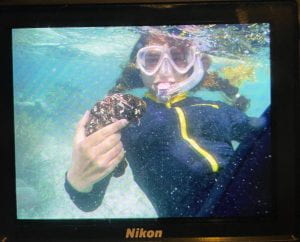
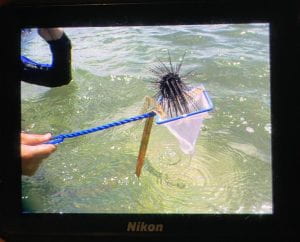
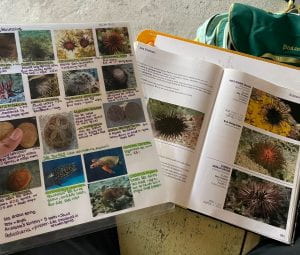
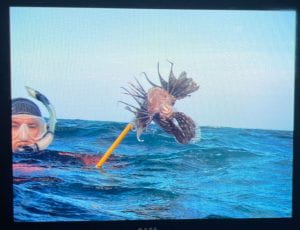
* please do not intentionally touch corals its a) illegal and b) bad for corals

